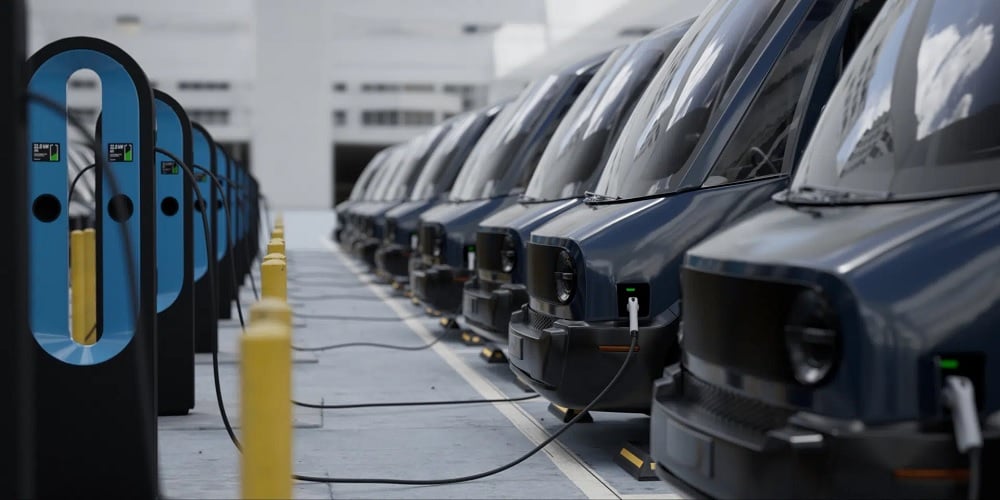Sustainable fleet management solutions for cities to reduce emissions

Sustainability in fleet management is more than just a buzzword—it’s a growing expectation for the world in which we live. About 85% of U.S. fleets focused on sustainability say that their use of green technology will grow over the next five years, pointing to a shift toward green, sustainable alternatives.
This number also includes hundreds of local or state-level government organizations looking to reduce emissions from their fleets. Today, municipalities across North America are preparing to implement their own greening initiatives for a brighter, cleaner future.
If you’re one of these municipalities looking to improve fuel efficiency and reduce operational costs for your government fleet, this guide can help you get started with practical next steps. It also details the benefits of reducing carbon emissions and provides sustainable fleet management advice for managers at any experience level.
The benefits of sustainable fleet management solutions
Sustainable fleets offer a bounty of utility to governments, environments, and public audiences alike. A few of the most impactful of these benefits include the following.
Reduced fuel dependence
Traditional fuels are expensive and intensive for government organizations, especially when it comes to large trucks and public buses. It’s why many municipalities are looking for greener solutions to avoid price spikes and shortages with sustainable fuels like hydrogen, LNG, and biodiesel.
Reducing fuel dependence also frees up your budget for other initiatives in the future. You may choose to invest in more charging stations or better infrastructure or even purchase new vehicles to continue reducing emissions.
Lower carbon footprint
Reducing emissions also reduces CO2, which is a serious component of atmospheric pollution. By reducing your carbon footprint and burning less traditional fuel, you can clear the air for civilians and release fewer greenhouse gases.
Keep in mind that carbon emissions for EVs in the U.S. are 68% lower than their traditionally fueled alternatives. This means a green fleet may produce seven-tenths less carbon, which benefits people, pets, and the planet.
Cost savings
Sustainable fleets may be more cost-effective than traditional fleets, especially when it comes to the equipment grants used for funding necessary tools and equipment. Not only can you shave off costs for traditional fuels and maintenance, but you can also ensure longer vehicle lifecycles with a high-quality maintenance team in place.
How much could you save with a sustainable fleet? Your mileage may vary, but studies show that the average EV owner saves $6,000 in lifetime costs compared to traditional vehicle owners.
Strategies for sustainable fleet management solutions for cities
Emission reduction programs are now a focal point of modern government fleets. By exploring a few of these suggestions, you can prepare your municipality for upcoming sustainability initiatives.
1. Maximize impact with medium- to heavy-duty battery EVs
Rather than replacing one or two smaller vehicles to reduce municipal emissions, consider focusing on public transport that could make a bigger impact. Today, more than 250 school fleets in the U.S. have ordered 1,800 battery-electric school buses, which ensure cleaner transportation for children and an easier transition for the fleets.
2. Try green fleet telematics
Green fleet telematics, also referred to as green tracking software, can help you make informed decisions about the efficiency of your fleet. You can track the safety and habits of EV drivers and route more efficient maps for the vehicles to travel.
Popular examples of green fleet telematics include:
- GPS
- In-cab video
- Inventory and maintenance tracking
3. Turn to compressed natural gas (CNG) fuel
CNG remains one of the most popular solutions for greener, cleaner fleets. It does not contaminate groundwater supply and is non-toxic to people and pets. It’s also a non-corrosive substance, which enhances the lifespan of certain vehicle components.
Compared to traditional diesel fuel, CNG offers:
- Equal or better emissions performance (reported by 96% of fleets)
- Less noise (reported by 87% of fleets)
- Reduced fuel supply (reported by 67% of fleets)
- Lower total cost of ownership (reported by 57% of fleets)
4. Work to rightsize your fleet
Approximately 5% to 10% of fleet assets are underutilized due to inefficiencies like improper rightsizing. To fix this, remove excess vehicles, add more utilized vehicles, and make room in your budget to accommodate greener upgrades.
If you’re not sure where to begin with rightsizing, start with older vehicles. Sedans with significant problems or trucks with expensive maintenance cycles may also be good candidates for replacement.
5. Embrace renewable diesel fuels
Many municipal fleets are looking to renewable diesel to support their transition to a zero-emission future. Unlike CNG, which is composed of methane gas, renewable diesel is a complex material created from the fats and oils found in soybeans and canola.
The popularity of renewable diesel becomes more obvious every year. Today, almost half of all state, county, or municipal fleets in America use renewable diesel.
Leveraging Sourcewell to reduce emissions for your fleet
Building a greener, more sustainable fleet can be complex at best. However, working alongside the right tools, agencies, and platforms can set up your organization for success.
There are many partnership programs for sustainable transitions, including Climate Mayors, Drive EV Fleets, and the Electrification Coalition. The pros at Sourcewell are also ready to help with a wide variety of sustainable fleet resources.
We offer:
- Competitively sourced cooperative contracts
- Valuable partnerships with EV suppliers
- Experienced professionals in the sustainability space
You can access each of these resources by registering your agency for free online.
See how easy it is to smoothly adhere to any greening initiatives using Sourcewell’s cooperative purchasing program. Streamline the process by choosing from hundreds of suppliers already on contract. Sourcewell’s procurement experts competitively solicit and award contracts on behalf of 50,000 participating agencies in North America. Check out our contracts here.

